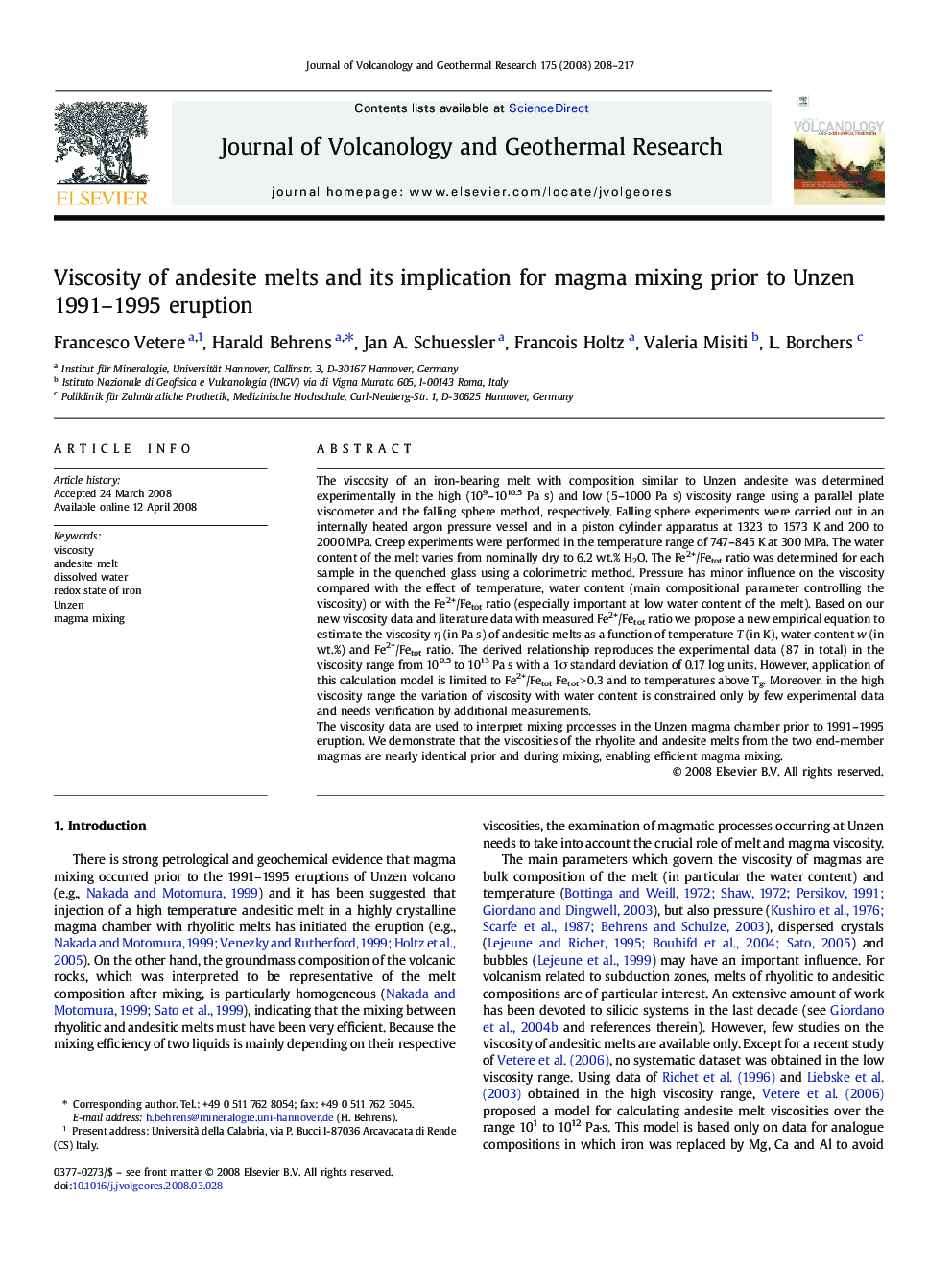| Article ID | Journal | Published Year | Pages | File Type |
|---|---|---|---|---|
| 4713640 | Journal of Volcanology and Geothermal Research | 2008 | 10 Pages |
The viscosity of an iron-bearing melt with composition similar to Unzen andesite was determined experimentally in the high (109–1010.5 Pa s) and low (5–1000 Pa s) viscosity range using a parallel plate viscometer and the falling sphere method, respectively. Falling sphere experiments were carried out in an internally heated argon pressure vessel and in a piston cylinder apparatus at 1323 to 1573 K and 200 to 2000 MPa. Creep experiments were performed in the temperature range of 747–845 K at 300 MPa. The water content of the melt varies from nominally dry to 6.2 wt.% H2O. The Fe2+/Fetot ratio was determined for each sample in the quenched glass using a colorimetric method. Pressure has minor influence on the viscosity compared with the effect of temperature, water content (main compositional parameter controlling the viscosity) or with the Fe2+/Fetot ratio (especially important at low water content of the melt). Based on our new viscosity data and literature data with measured Fe2+/Fetot ratio we propose a new empirical equation to estimate the viscosity η (in Pa s) of andesitic melts as a function of temperature T (in K), water content w (in wt.%) and Fe2+/Fetot ratio. The derived relationship reproduces the experimental data (87 in total) in the viscosity range from 100.5 to 1013 Pa s with a 1σ standard deviation of 0.17 log units. However, application of this calculation model is limited to Fe2+/Fetot Fetot > 0.3 and to temperatures above Tg. Moreover, in the high viscosity range the variation of viscosity with water content is constrained only by few experimental data and needs verification by additional measurements.The viscosity data are used to interpret mixing processes in the Unzen magma chamber prior to 1991–1995 eruption. We demonstrate that the viscosities of the rhyolite and andesite melts from the two end-member magmas are nearly identical prior and during mixing, enabling efficient magma mixing.
